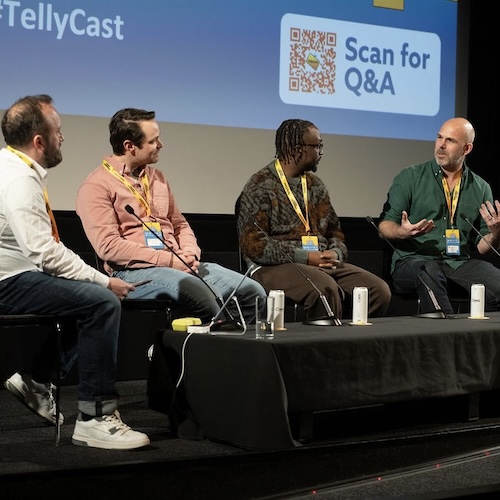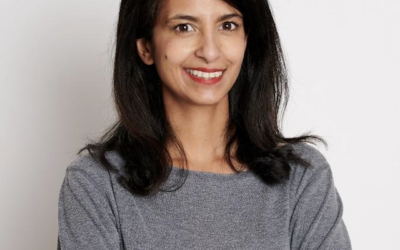YouTube is a direct rival for traditional broadcasters, especially when it comes to the eyeballs of younger viewers. Yet it is also a valuable promotional platform and partner for the established TV industry: complementing it rather than simply replacing it.
Does that make it a friend, a frenemy or a foe? A panel at the TellyCast Digital Content Forum today explored that question. YouTube’s strategic partner manager – UK partnerships Neil Price was joined by the MD of Channel 4’s 4Studio division Matt Risley, as well Wall of Entertainment MD Tafara Makopa. Channel 4’s distribution & partnerships senior lead Joe Harbinson moderated.
“Some years it’s great, and some years there’s healthy tension,” said Risley of the relationship between TV and YouTube. “The landscape has changed hugely.” YouTube publishes full episodes on YouTube, tries new concepts with Channel 4.0, and livestreamed the Paralympics this year.
Price praised Channel 4 for going beyond just mining its archives for YouTube. “It’s a really, really nice mix. And one of the big things I push all partners to do is experiment, and that’s one thing you guys [Channel 4] can definitely say you’re doing.”
Makopa agreed. “YouTube has allowed us to prove concepts. I used to be harsh on commissioners and say ‘why don’t they get it?’… But YouTube has allowed us to communicate better between ourselves as producers and as commissioners… YouTube and TV go hand-in-hand.”
“Traditional businesses like ours are bloody scared of anything new… [but] agility and experimentation is the only way you learn. Just trying things, and not being scared,” added Risley.
The panel turned their thoughts to a fragmentation in consumption, and the impact of short-form video. Price warned that it’s not as simple as young people migrating to YouTube Shorts and only older people watching longer-form content. Understanding your audience and their tastes is key.
“There was probably a bit of cautious experimentation to start. You see a lot of people starting to test Shorts standalone, separate from what they’re doing with their longer-form formats. And maybe you experiment in the Shorts space before you commit to funding something in long-form format. You try to understand: does this have legs?” he said.
Makopa offered a creative standpoint on multi-format opportunities, and said that reframing your goal is key. “It’s not making TV for social. It’s making great content for great consumers,” he said. “It doesn’t need to look like a TV show and flow like a TV show.”
Risley admitted that it can be “exhausting” thinking about all the variables and opportunities on a platform like YouTube, but “you need to play in all those places and lean in to what works for you as a business”.
That’s not always about what’s most lucrative in direct revenues. Sometimes it’s about reach and audience growth, as Risley pointed out. “You can’t rally monetise a Short, you get about 50p for about a billion views!” he joked.
“It’s probably a bit more than 50p for a billion views!” chipped in Price, quickly.
Makopa praised YouTube for “creating a whole wave of commissioners who don’t work in television” – for example brands that are commissioning content for their channels. “The monetisation model has opened up the market,” he said.
Or rather, the monetisation models: Makopa also hailed an exciting patchwork of advertising revenues, product placement, branded commissions and other income streams.
“The pie is being shared by more people now, not just in regards to viewers, but in terms of the people making and commissioning that content,” added Risley.
Price noted that YouTube’s success depends on its creators and partners succeeding, and said that it has worked hard to extend its array of ways to make money, from channel memberships and tips-economy features to giving partners more control over their ad inventories.
During the Q&A segment of the session, one audience member asked whether putting full episodes on YouTube accelerates the shift of viewers away from linear TV.
“We don’t think so,” said Risley. “From what we have seen from the data it looks like these audiences are additive, not cannibalistic… Obviously we are all working this out as we go.” He said the only way to do that is to experiment, and then evaluating the resulting data carefully.
How can broadcasters and producers figure out what formats work best on YouTube? “A YouTube format is a format that is made for pure entertainment and engagement. Fast pace,” said Makopa. “It needs to be the best content, however long that is. And also a format that has an audience in mind, and a community that you’re speaking to.”
Risley said that while putting existing shows on YouTube can yield surprises in terms of their popularity, for new formats it’s important to make them “YouTubey” to work on the platform. “If you’re starting from scratch there’s a lot of data insights you can use to make good YouTube content.”





